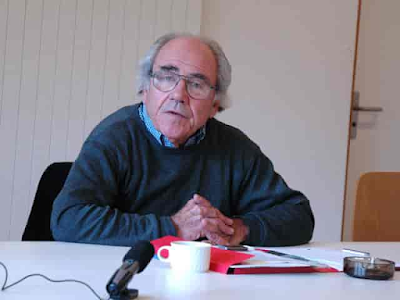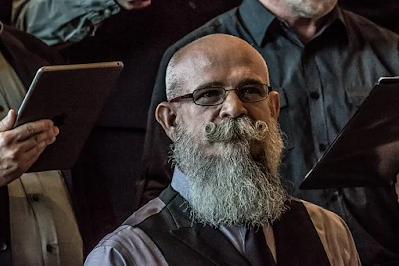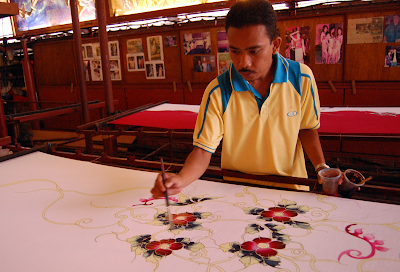Featured
- Get link
- X
- Other Apps
WHAT IS ADINKRA?
ADINKRA.
The Asante people of Ghana, as well as many of its neighbors, wear Adinkra cloth during their funerals.
Funerals are among the most expensive of all Asante ceremonial events, demonstrating the Asante people's continued devotion to their ancestors.
According to researcher J. B. Danquah, adinkra means "to part, be separated, to leave one another, to say good-bye." Designs made using carved gourd stamps and a black dye put inside a rectilinear grid whose divisions are formed by a three or four tine comb brushed in measured segments over the length and breadth of the fabric differentiate Adinkra textiles.
Some textiles contain a single imprinted pattern, while others have over twenty distinct designs.
These imprinted patterns are required for a fabric to be termed adinkra.
If the fabric is to be used as mourning clothing, it must be dyed crimson, russet brown, or a dark blue-black hue.
The latter is unusually unstamped.
Some accounts claim that the red adinkra is kept for the family's closest relatives, while others claim that the brown cloths serve the same purpose.
Clearly, there are differences in practice. Sunday adinkra are adinkra cloths that are either white or printed on a brightly colored fabric.
They are not worn for funerals, but rather as celebratory clothing for a variety of special events, similar to kente cloth.
The first known adinkra fabric dates from 1817 and is made up of twenty-four handwoven strips of undyed cotton cloth, each approximately three inches wide and woven on the same kind of thin strip horizontal treadle loom as Asante kente.
The strips are stitched selvage to selvage (finished edges of a fabric) to create a big men's garment draped over the body in a toga manner, with the left shoulder covered and the right shoulder uncovered.
One portion serves as a skirt, while the other serves as an upper wrapping or shawl.
The latter component was more often fashioned into a blouse in the early 2000s.
The compositional divisions of the fabric, as well as the size of the first stamps, were certainly inspired by the usage of pieced-together thin strips of a set width.
Handwoven strip weaves had mostly been supplanted by imported industrially manufactured mill-woven fabric by the end of the eighteenth century.
For the West African market, the British were also manufacturing mill-woven fabric with rollerprinted adinkra designs about this period.
A further split of the men's cloths along their lengths with bands of colorful whip-stitched embroidery in combinations of yellow, red, green, and blue is a design element on many adinkra textiles.
This tradition extends to at least the end of the nineteenth century, as shown by an 1896 picture of the then-king of Asante, Agyeman Prempeh I.
The needlework is typically straightedged down the length of the fabric, but a popular variation has serrated edges in a “centipede” or “zigzag” pattern.
In 1817, the Englishman Thomas Bowdich noticed this behavior, but it was not necessarily related to adinkra.
Multicolored handwoven strips approximately one and a half inches wide are used in place of embroidery on certain textiles.
It is widely assumed that Islam, and particularly Arabic inscribed textiles, inspired the adinkra genre from the beginning, and that these cloths are still made by Asante's northern neighbors.
These have a gridlike division of space and a variety of hand-drawn motifs that are easily recognized as adinkra patterns in common.
On Islamic-inspired cast brass ceremonial vessels known as kuduo, some of the same design ideas and patterns may be seen.
Since the early nineteenth century, the Asante's attraction to Islam's spiritual effectiveness and fluency in Arabic has been widely recorded.
A fabric with Arabic inscriptions is still part of the present monarch of Asante's clothing.
The claim is that the stamped adinkra fabric evolved as a shorthand for the more labor-intensive and overtly literate Muslim textiles.
The rich graphic language contained on the stamps is of special importance in the study and enjoyment of adinkra.
There were approximately fifty commonly repeated themes till the middle of the twentieth century.
The visual representations, like other Asante arts, include a highly conventionalized linguistic component.
Many themes have their meanings clarified by well-known proverbs.
The adage "A ram battles with his heart, not his horns" is represented by a design with four spiraling shapes radiating from the center, implying that character strength is more essential than the weaponry used.
A hen's foot is a fleurde-lis-shaped stamp that is linked with the proverb "The hen's foot may tread on her chicks, but it does not kill them," which means that a mother protects and guides her children rather than harming them.
The inevitability is shown by a stamp showing a ladder, which reads, "The ladder of death is not climbed by one man alone."
The most frequent theme is an abstract shape that symbolizes "Except God," although the meaning is best expressed by "Only God." The Ashanti worldview is well expressed in this funeral cloth, as it is in most of their arts.
The number of stamp designs has grown to well over 500 in the twenty-first century.
Numerous allusions to contemporary technology, such as cars, hydroelectric power, and cell phones, are included.
Several themes represent the emblems of several Ghanaian political parties that have vied for power since the country's independence (hand, cock, elephant, and cocoa tree).
Another popular trend is a set of stamps that spell out the text.
For example, the gourd stamp "EKAA NSEE NKOA" refers to a lengthier adage that reads, "The woodpecker celebrates the death of the onyina tree." This is a sort of cycle-of-life remark since the bird nests and eats in the dead tree.
The origins of adinkra can be traced back to script-filled, handwritten (albeit Arabic) inscribed cloths.
As with Asante kente, the verbal component of adinkra imagery is an important factor in its popularity in African American communities.
Roller printed millwoven adinkra is nearly as commercially successful as machine-made kente and appears in many of the same clothing forms, including hats, bags, scarves, and shawls.
Individual adinkra motifs have even transcended clothing forms to become an important element in graphic design, fine arts, and even architecture.
Find Jai on Twitter | LinkedIn | Instagram
- Get link
- X
- Other Apps













